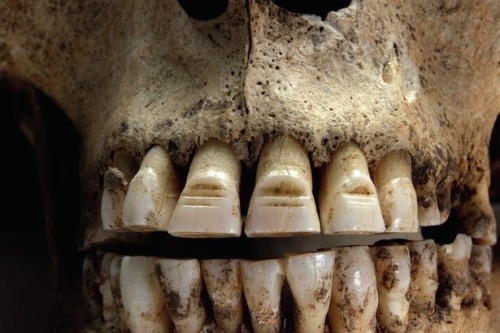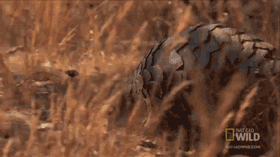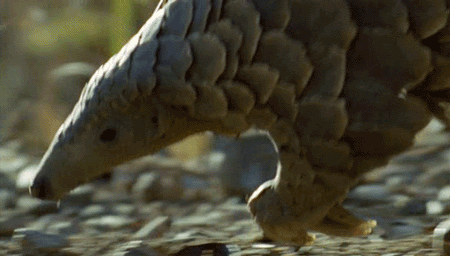70 Ask-Questions For Science People... Because Science
70 Ask-Questions for Science people... because Science
What’s your major/field?
What made you choose your major/field?
What’s your favorite thing to do in the lab?
What’s the most interesting lab story?
What’s your favorite class?
Which professors do you ship together?
Annoying things your labmates do?
What are your thoughts on animal testing?
Any chemical burns or lab related accidents?
On a scale from 1 to 10 how sensitive are your lab scales?
Who’s your favorite scientist?
Who’s your least favorite scientist?
Favorite female scientists?
Do you do field work? What kind?
Ever tasted an experiment?
What are your typical daydreams about?
How often do you say “for science”?
Do you think about murdering someone with science?
Ever used your scientific knowledge for “bad” stuff?
Whats the most “evil scientist” thing you can think of?
If you had infinite funding, what would your research be about?
What is your favorite scientific theory?
Is a scientific mind attractive to you?
What is your title?
What is the role of technology in your field?
What do you enjoy most about doing science?
What do you enjoy least about doing science?
What is your tolerance on stupidity?
What are your strengths in your field of study?
Your weaknesses?
Do you have a bit of a god complex?
Why are biology majors so….you know..
What motivates you?
Do you like being supervised?
Describe your analytic abilities.
How would your friends describe you?
How would your professors describe you?
Is math a little bit too mathy for you?
Do you code? if yes, how many languages?
Thoughts on AI and robots?
What’s your favorite science blog?
Philosophical views on humanity and nature?
What are your short term and long term career goals?
Do you understand general relativity?
Favorite Dinosaur? Fossil? whatever…
How many bones can you name in medical terms?
How many muscles can you name in medical terms?
What’s your favorite molecule?
Do you like proofs or cold hard Mathematics?
What’s your favorite element?
Favorite show?
Favorite scientific fictional character?
What’s your favorite micro organism?
Have you ever held an organ in your hands?
Lab coats?
What about … lab goats?
White latex gloves or blue ones?
What’s the most dangerous experiment you’ve done in the lab?
What was the first time you got caught doing science?
What was you’r parent’s reaction when you told them you’re a scientist?
Except for lab coats in the bedroom what other kinks do you have?
What would you do a TED talk on?
Are you creative, artistic?
Do you have an attractive professor you can’t pay attention to?
What’s your favorite mineral?
What scientific books would you recommend?
Thoughts on spectral analysis?
Any interesting stories from the lab?
Ever did or thought about doing it or someone in the lab?
How much science is too much science?
Compiled by: rudescience
More Posts from Llamaslikesciencetoo and Others
You know you grew up on Steve Irwin when you see a photo of a crocodile and think, “Wow. Just beautiful.”

Viking men were also heavily tattooed but their most striking and fearsome fashion statement was their gnashers.
They would file horizontal lines into the enamel on their front teeth and paint in red resin. Gareth Williams (curator of the exhibition, Vikings: life and legend) says: “That’s like your punk sticking a safety pin through his nose. It would have been very uncomfortable and it’s quite deliberately saying ‘If I’m prepared to do this to myself, what am I going to do to you?’.” (Source)
I’d like to introduce you to….
The pangolin

It walks on its two hind legs

Nicknamed the Walking Artichoke

or the Anteater Pinecones

They look utterly ridiculous and they are my favourite thing you’re welcome and goodbye











A few photos from my visit to the Museum of Osteology in Oklahoma City.
How do you disentangle a humpback whale?
Very, very carefully – and without getting in the water. The Hawaiian Islands Large Whale Entanglement Response Network has it down to a science.

Photo: J. Moore/NOAA Permit #15240
Each year, numerous whales and other marine animals become entangled in a variety of materials, such as fishing gear, rope and plastic bags. Entanglement can physically harm animals while also impairing their movement. An entangled animal can find it difficult or impossible to feed, and at times the entanglement can drown them.
That’s where the Hawaiian Islands Large Whale Entanglement Response Network comes in. These highly-trained professionals from Hawaiian Islands Humpback Whale National Marine Sanctuary, working closely with and under authority of NOAA Fisheries’ Marine Mammal Health and Stranding Response Program, know how to safely rescue creatures like humpback whales from entanglement.

Humpback whales can hold their breath for much longer and swim faster than a human can, and an entangled whale is often stressed or panicked. Trying to free a 40-ton whale that likely doesn’t realize rescuers are there to help can be dangerous for the animal and for humans. Rescuers never enter the water to free an entangled whale.
Instead, rescuers grab hold of the entangled lines using a grappling hook, then attach a series of buoys to the lines. This keeps the whale at the surface and slows it down enough for the disentanglement team, following the whale in a small inflatable boat, to gain access to the animal and the lines it’s tangled in. However, even with the buoys attached, the inflatable boat may still get towed behind the animal. Humpback whales are strong animals that can move rapidly through the water, so this can be quite dangerous. It is important that the disentanglement team be trained and prepared to respond to the whale’s movements.

As the whale grows tired, the rescuers work their way closer. Once they’re close enough, they use a custom-designed knife attached to a long pole to cut away the gear entangling the whale. These knives are specially designed to cut the rope but not the whale. Typically, after several passes, the whale is free!
Once the whale is untangled, the team uses the grappling hook once again to collect and remove the debris from the water so that other animals don’t become trapped in the future.

Photo: Ed Lyman/NOAA, under NOAA permit #15240
Entanglement is a problem around the globe, and sanctuary staff can only help a small percentage of entangled whales. Since 2002, Hawaiian Islands Humpback Whale National Marine Sanctuary has received more than 100 confirmed reports of entangled humpbacks, representing at least 70 different animals — and more entanglements go unseen and unreported.
With that in mind, prevention is the ultimate objective: by reducing the amount of derelict fishing gear and other debris in the ocean and making actively fished gear more “whale safe,” we can reduce the number of whales and other animals that get entangled and hurt or killed.
Watch the Disentanglement Response Network in action:
GIFs via NOAA’s Marine Mammal Health and Stranding Response Program, under NOAA permits 932-1905, 15240 932-1489, and 932-1905-01/MA-009526-1, and Hawaii State Permit PMAL-2015-206.

SeaWorld Can Extend Tilikum's Legacy Beyond the Show Pool
Monday, March 14, 2016
http://voiceoftheorcas.blogspot.com/2016/03/seaworld-can-extend-tilikums-legacy.html
To Whom It May Concern:
Myself, and the other members of VOTO, Samantha Berg, John Jett, and Carol Ray, have been informed that Tilikum, a SeaWorld killer whale in Orlando, is near death. We are saddened by this announcement, although it is not unexpected.
Tilikum has developed an antibiotic resistant bacterial infection of the lungs, with pneumonia being the leading reported cause of captive killer whale mortality. Efforts to treat Tilikum have failed due to decades of antibiotic and antifungal therapy, medications that three-of-us at VOTO have fed him, and medications he was on in 2010 when he killed Dawn Brancheau, as reported by
APHIS, here
Tilikum has been getting fed antibiotics consistently for at least two decades, primarily because of his badly damaged teeth, including open bore holes that must be flushed with antiseptic solution 2-3 times daily. These bore holes can lead to fish particles, roe, and other debris getting into the jaw and eventually into his blood stream, causing chronic low grade infection(s), and able to seed various organs, including the lungs. The end result is that, now, Tilikum is filled with bacteria that are resistant to powerful and broad spectrum medications that SeaWorld is dosing him with.
Tilikum is, at this time, likely suffering from pulmonary edema, or excess fluid in his lungs. When the surface area of his alveoli diminishes sufficiently, he will suffocate in a stretcher, at SeaWorld. In a last ditch effort to obtain air to oxygenate his tissues, he will likely thrash in the stretcher, and go through a period of “death throes,” prior to finally passing. This is a particularly dangerous time for the animal care and training staff on hand.
A crane is reportedly standing by, possibly to recover his body if he should pass. This information is unconfirmed, but it does correspond with SeaWorld’s recent announcements seen in this video:
Many citizens, including some in the scientific community, are hopeful that SeaWorld will dedicate Tilikum’s cadaver to science. This gesture would advance our understanding of the impact of captivity on marine mammals such as Tilikum.
Histological samples of dorsal fin collagen would help us understand collagen fibrillogenesis in killer whales, and why dorsal fins collapse in captivity. Kidney tissue samples could help us understand the effects of chronic dehydration on orcas, like Tilikum, who require gelatin as a dietary supplement. Cardiac tissue could be examined for evidence of physical deconditioning. Eye tissue could be used to understand the effects of looking upward toward trainers, a behavior that is probably contributory to early cataract formation in show animals that must look for hand signals from trainers, on stage. Blood tissue can be used to test for elevated titers of viruses such as West Nile, St Louis encephalitis, and other mosquito transmitted “bugs” associated with zoos, but not seen in wild animals. Immunoglobulin levels could provide information on captive orca immunity. Detailed bone and joint examinations could be examined for evidence of various arthritides. DNA testing could help identify Tilikum’s natal pod, and so on.
Take the NFL as an example
Samples of brain tissue were critical in understanding the newly described condition (seen in NFL players) known as
Chronic Traumatic Encephalopaty (CTE)
and as depicted in the feature film “Concussion,” with Will Smith. The NFL was initially resistant to outside scientists performing these studies, but is now helping to fund them. SeaWorld can mimic the NFL, and CEO Joel Manby can get credit for the change, something that might give him some job security.
Killer whales in captivity are also known to slam their heads on solid objects such as gates and concrete walls, especially adult male killer whales, with Kanduke being a famous example. Tilikum’s brain tissue, or perhaps a new MRI, as depicted in Blackfish, could push our understanding of the orca brain forward, a brain four times larger than our own.
SeaWorld has an opportunity to extend Tilikum’s legacy beyond the performance pool and to substantiate it’s claims of performing relevant science. We are hopeful they will take up this idea for the benefit of science, the public, policy makers, whale lovers, and for future killer whales.
Thank you, Tilikum, for your sacrifices. Your legacy will live on through us and the millions of people your story has touched.
Jeffrey Ventre MD
Blackfish cast member

Snowshoe hares’ traditional habitat in Wisconsin may not be white enough to provide the animals with cover as the climate changes.
“The snowshoe hare is perfectly modeled for life on snow,” said Jonathan Pauli, a professor of forest and wildlife ecology at the University of Wisconsin-Madison and a coauthor of a study recently published in Proceedings of the Royal Society B, in a release. “They’re adapted to glide on top of the snow and to blend in with the historical colors of the landscape.”
The snow is vital for snowshoe hares (Lepus americanus), who rely on it for camouflage from predators. But snow is becoming less common in the southern range of their habitat in Wisconsin…
photo by Gordon E. Robertson

Canaries do not hate these spicy treats. In fact, they would be more than willing to eat jalapeno peppers. These are rich in vitamins A and C. / via

-
 halfbakedmuon liked this · 1 year ago
halfbakedmuon liked this · 1 year ago -
 spacerall reblogged this · 1 year ago
spacerall reblogged this · 1 year ago -
 thebeckybear liked this · 2 years ago
thebeckybear liked this · 2 years ago -
 rebellious-sardine liked this · 3 years ago
rebellious-sardine liked this · 3 years ago -
 thevulturemonster liked this · 3 years ago
thevulturemonster liked this · 3 years ago -
 catsinzerogravity liked this · 3 years ago
catsinzerogravity liked this · 3 years ago -
 ibelonginthesun liked this · 3 years ago
ibelonginthesun liked this · 3 years ago -
 alienz-rule-earth liked this · 3 years ago
alienz-rule-earth liked this · 3 years ago -
 trinalli reblogged this · 3 years ago
trinalli reblogged this · 3 years ago -
 trinalli liked this · 3 years ago
trinalli liked this · 3 years ago -
 sparkly-angell reblogged this · 3 years ago
sparkly-angell reblogged this · 3 years ago -
 symbiotic-science reblogged this · 3 years ago
symbiotic-science reblogged this · 3 years ago -
 localneighborhoodastronomer reblogged this · 3 years ago
localneighborhoodastronomer reblogged this · 3 years ago -
 ohl reblogged this · 3 years ago
ohl reblogged this · 3 years ago -
 feyrce liked this · 3 years ago
feyrce liked this · 3 years ago -
 bug-catcher-jecht liked this · 3 years ago
bug-catcher-jecht liked this · 3 years ago -
 finest-gay-in-town liked this · 3 years ago
finest-gay-in-town liked this · 3 years ago -
 elfje-8 reblogged this · 3 years ago
elfje-8 reblogged this · 3 years ago -
 wrappedindaisychains-blog reblogged this · 3 years ago
wrappedindaisychains-blog reblogged this · 3 years ago -
 wrappedindaisychains-blog liked this · 3 years ago
wrappedindaisychains-blog liked this · 3 years ago -
 frogally-amazing liked this · 3 years ago
frogally-amazing liked this · 3 years ago -
 starcarolstar reblogged this · 3 years ago
starcarolstar reblogged this · 3 years ago
Mainly interested in ecology, but also the entirety of science.
179 posts